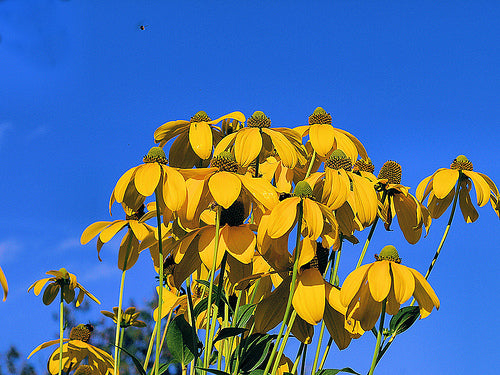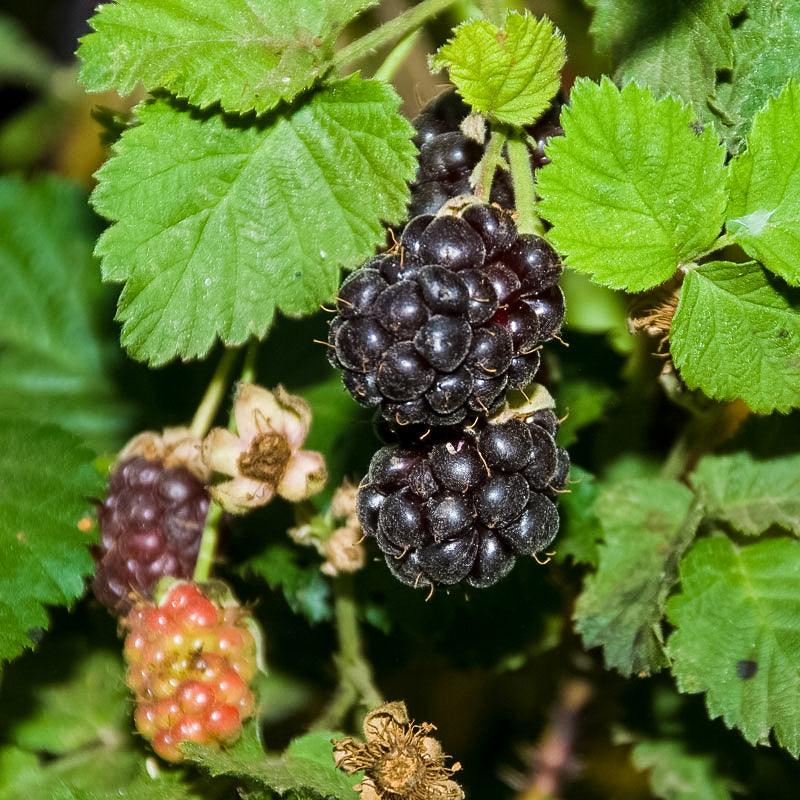Description
Mix-and-match 4 or more potted berry plants for free shipping!
Boysenberries (Blackberry Rubus) are a classic and beloved variety known for their large, dark purple fruit, offering a perfect balance of sweetness and tartness. Widely grown across the United States, the boysenberry is especially cherished for its versatility—perfect for eating fresh, baking into pies and cobblers, or making rich preserves.
The boysenberry plant thrives in full sun and well-draining soil, producing abundant harvests in mid-summer. With a trailing growth habit, it benefits from trellis support to improve fruit production and make harvesting easier. Originally developed in southern California, near Anaheim, California, the boysenberry rose to fame thanks to Walter Knott of Knott’s Berry Farm. Today, it remains a favorite among home gardeners and berry lovers alike.
Whether you're growing a backyard berry patch or looking for a boysenberry plant for sale, this flavorful and productive fruit is an ideal addition to your garden.
Potted Boysenberry
-
Zones: 6-9
-
Harvest: mid-June to early July
-
Fruit: Large, long fruits that ripen to a deep maroon. Juicy, sweet-tart berry with a delightful aroma.
- Facts of note: Perfect for freezing, canning, jams, jellies, and eating fresh. Boysenberries were developed from European raspberries and three different varieties of native blackberries. Needs protection below 10°F. Boysenberries are the fruit that made Knott's Berry Farm of Buena Park, California famous. This potted boysenberry variety features thorned canes, offering a traditional berry-growing experience.
- Plants are 2 years, grade #1Boysenberries
Esteemed for their large, sweet-tart fruit, thrive within specific parameters that cater to their growth and fruitfulness. Delving into the nuances of cultivating these berries reveals a process that requires attention to detail and a grasp of their unique needs.
Understanding the Basics:
Boysenberries, scientifically known as Rubus ursinus, are ideally suited for Zones 6-9. Bearing fruits from mid-June to early July, these berries boast elongated shapes and mature to a rich maroon hue. Their flavor is a delightful blend of sweetness and tartness, accompanied by an inviting aroma.
Origins and Development:
Rudolph Boysen, George Darrow, and Farmer Walter Knott play significant roles in the history of boysenberries. This fruit resulted from the crossbreeding of European raspberries and three distinct varieties of native blackberries. Farmer Walter Knott's cultivation of boysenberries at Knott's Berry Farm in Buena Park, California, contributed greatly to their popularity.
Ideal Conditions:
Boysenberries demand careful attention to their environmental needs. They flourish in well-draining soil and require protection when temperatures drop below 10°F. Full sun exposure aids their growth, although they also appreciate some shade in scorching climates. Adequate air circulation is crucial to prevent fungal diseases.
Planting and Care:
Planting two-year-old, grade #1 boysenberry plants sets a solid foundation for growth. Ensure proper spacing, usually 4-6 feet apart, allowing the plants ample room to spread and thrive. Regular watering is essential, especially during dry spells, while mulching helps retain moisture and regulate soil temperature.
Pruning and Maintenance:
Pruning is pivotal for boysenberries. Removing dead or diseased canes and keeping the growth controlled ensures better fruit production. Prune during the dormant season, and be cautious, as they bear fruit on second-year canes.
Pollination:
Boysenberries are self-pollinating, though additional nearby plants can enhance pollination and fruit set. Encouraging pollinator-friendly flora in the vicinity can attract beneficial insects and aid in the pollination process.
Comparison to Other Berries:
Boysenberries are large, dark maroon or purple berries with a sweet-tart flavor, a hybrid of blackberry, raspberry, and loganberry, growing on trailing vines. Raspberries are smaller, come in various colors like red, black, purple, or golden, and have a sweet, aromatic taste, growing on canes and being more cold-hardy. Loganberries, a hybrid of blackberry and raspberry, are dark red or deep purple with a slightly tart taste, growing on vigorous trailing vines.
Harvest and Usage:
Harvest boysenberries when they reach full ripeness, displaying their deep maroon color and easily detaching from the vine. Their versatility allows for various culinary uses, including freezing, canning, making jams, jellies, or simply relishing them fresh. Proper storage in the refrigerator prolongs its shelf life.
Boysenberries stand as a testament to meticulous cultivation, offering a delectable fruit known for its versatility and unique flavor profile. By providing them with the right conditions and care, growers can enjoy bountiful harvests and relish the fruits of their labor.
For more information, please enjoy our Growing Guide for planting and growing cane berries.

Why Choose Fresh Garden Living
Shop Fresh Garden Living, your trusted online nursery for premium plants and eco-friendly gardening solutions since 2006.
- Beautiful potted roses grown pesticide-free.
- Naturally grown herbs, bearded iris, and perennials from our Oregon nursery.
- Trusted Service: 4.9+ star rating, fast shipping, responsive support.
- Premium house plants shipped directly to your home.
Order premium plants & products today for sustainable gardening delivered nationwide!


